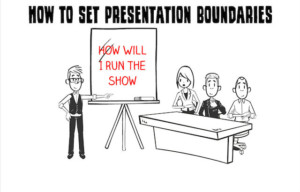I know something about you.
You don’t like to be at fault for anything. That’s not a secret; no one likes to be at fault.
We are trained since childhood to think that being at fault equals punishment. As a result, and as adults, we develop blame avoidance. Anytime we perceive a blame is coming our way; we become defensive. We can’t help it.
If you want to influence people, you need them to listen without having their walls up. One of the best ways to do that is to free them from fault.
Politicians use an extreme version of the technique. In politics, this tactic is called the “scapegoat” technique. It’s not you; it’s the 1%. It’s not you; it’s the Democrats. It’s not you; it’s the Congress. Have you heard such phrases? They are used because they work.
Notice that politicians remove the blame from you by blaming someone else. That works in politics, but it will not work in business. You have to remove the responsibility from the people and put it on “something” else and not “someone” else. Otherwise, you will just alienate the people you work with and turn them against each other.
The “something” else has to be something that can be controlled and changed. For example, the “something” can be a system, product, education, belief, or an object.
The other thing you need to be aware of so that you don’t fall in the politician trap, is, to be honest, and authentic. You can’t make up things to use this technique. You have to look deeper and find the truth.
Here is a Formula to help you put this influence technique to use.
1. Say: “You,” “We,” or “Some People.” Pick one that will work with your audience. Notice that “you” is the most direct and “some people” is the least direct.
2. Declare the problem/challenge faced by the group with whom you are talking. The problem/challenge could be not meeting sales quotas, having public speaking fear, not meeting a project deadline, etc.
3. Blame something else other than the group. Blame something that can be fixed. Something like training, beliefs, conditioning, having contradictory information, outdated technology, etc. Avoid blaming some person or a group of individuals.
4. Provide solution. Once you remove responsibility from the equation, it’s time to offer your solution. At this point, your audience defenses are down, and they will be more receptive to your ideas.
Here is an example of the four steps:
1. Say: “You,” “We,” or “Some People.”
You
2. Declare the problem/challenge faced by the group.
Get stressed out when preparing for a big presentation,
3. Blame something else other than the group.
Because in school, they taught us a system for creating presentations that were invented by the Greeks 2500 years ago. The system is a good system, but it’s not robust enough for modern times.
4. Provide solution.
The best modern system I found for creating my presentations is called the “Bucket System” It’s used by speakers like Seth Godin, Tony Robbins, and by the late Steve Jobs. It helps you organize your thoughts in a modular format so that you can construct your ideas more flexibly and powerfully. You can learn the whole system in the full day Magnetic Messaging Bootcamp.
Here is the example again without breaking it into parts:
You get stressed out when preparing for a big presentation, because, in school, they taught us a system for creating presentations that were invented by the Greeks 2500 years ago. The system is a good system, but it’s not robust enough for modern times.
The best current system I found for creating my presentations is called the “Bucket System” It’s used by speakers like Seth Godin, Tony Robbins, and by the late Steve Jobs. It helps you organize your thoughts in a modular format so that you can construct your ideas more flexibly and powerfully. You can learn the whole system in the full day Magnetic Messaging Bootcamp.
Hope the example helps. Now it’s your turn. Try it for your content and post the example in the comments below.
If you want to reduce resistance to your messages, always work on removing the blame by assigning it to something else other than your audience. It will allow them to be more open and less resistant to your ideas.



